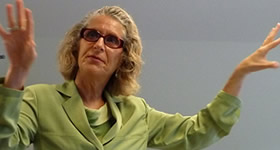I think we’re stuck in a status quo place. Faced with the rapidly changing world – and it’s been that way for a while – our strategic planning is too staid, too predictable, too standardized to plan for any future that could come along.
So, I’m constantly developing new approaches. I present my new thinking in workshops around the world. I’m using these approaches with my clients.
Here’s the big question: How can you and your organization recognize and anticipate, prepare for and respond to different situations, different futures? How can you use various vantage points (or lens) to plan for any future that could come along? What systems will you create to integrate these approaches into your work?
1. Recognize sustainable trends and temporary anomalies.What has changed permanently? What is more temporary?
2. Foresee the unforeseeable. The global economic crisis and recession weren’t a surprise. Neither is the chatter about the U.S. charitable deduction.
3. Distinguish between concern and alarm. If you’re a nuclear power plant, “concern” is Three Mile Island. “Alarm” is Fukushima Daichii.
4. Differentiate between risk and gamble. In military terms, able to get out versus no way out.
5. Anticipate unintended consequences. Identify them!
6. Imagine that the inconceivable becomes inevitable. Wow.
7. Identify the stop-loss moment, the military and stock market concepts. Maybe Greece’s exit from the eurozone will move from inconceivable to inevitable – and there will be that stop-loss moment when the inevitable must happen.
How is your planning going?

